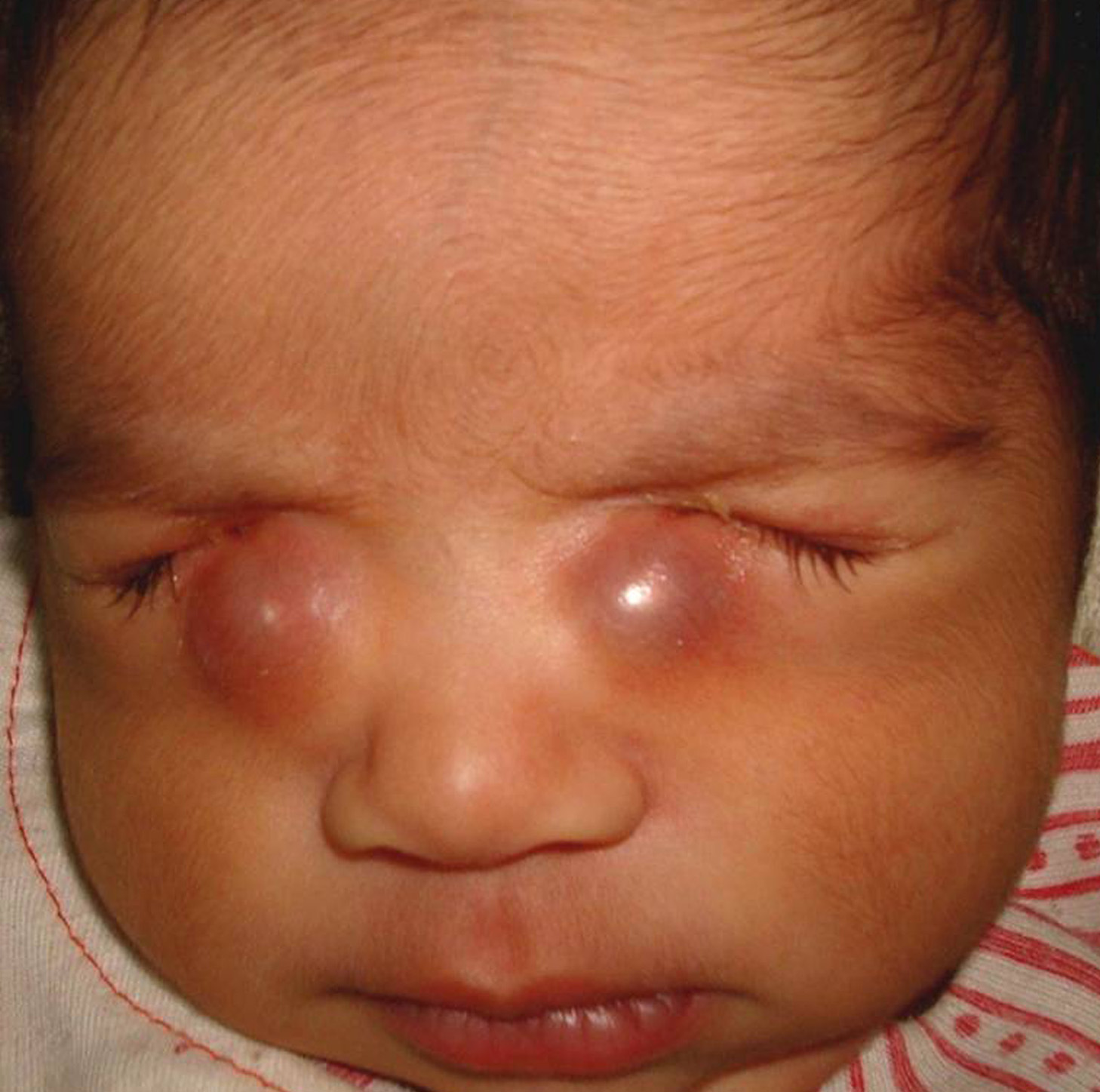Congenital bilateral dacryocele

Downloads
DOI:
https://doi.org/10.26326/2281-9649.27.3.1473How to Cite
Abstract
Dacryocele occurs when mesoderm fails to channel distally, and along with distal obstruction there is a proximal functional or mechanical obstruction. As a consequence of this situation there is a distension of the tear sacs below the medial canthal tendon (2). The latter may appear as a mass causing an upward slanting of the eyelid fissure nasally.
The contents of the lacrimal sac can cause a cystic expansion in the nose and bilateral congenital dacryoceles can potentially obstruct the breathing of neonates who are essential nasal breathers (2). Our patient did not show any signs of respiratory distress ruling out the presence of intranasal cysts. A nasolacrimal duct probing under the guidance of
2.7 mm 30° nasal endoscope along with cruciate marsupialisation of intranasal cyst in inferior meatus remains the treatment of choice (1).
